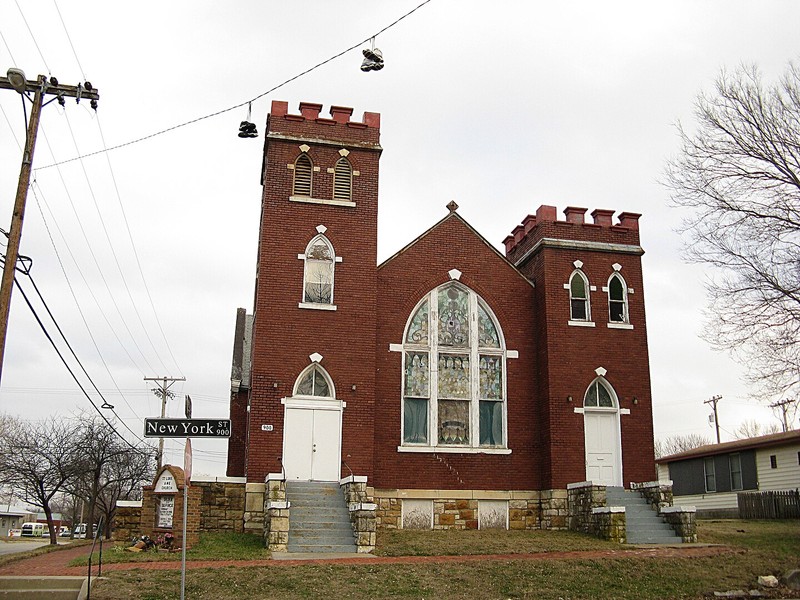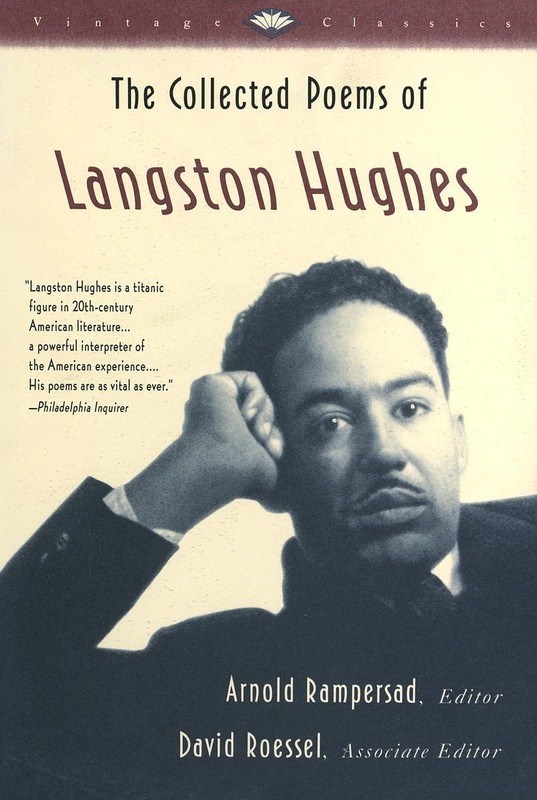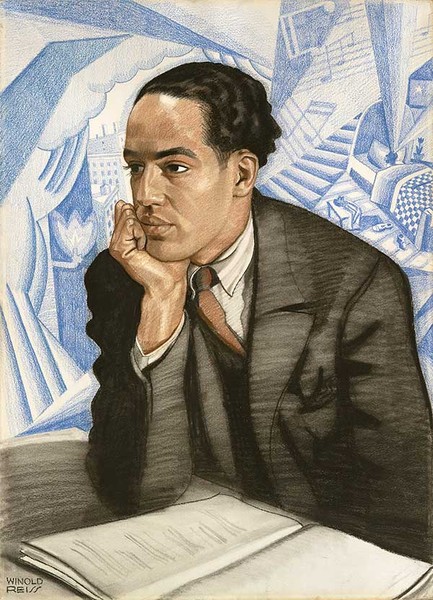St. Luke African Methodist Episcopal Church
Introduction
Text-to-speech Audio
Home to Lawrence's Saint Luke African Methodist Episcopal (AME) Church which dates back to 1862, this structure was built in 1910 and serves a congregation that has served a vital role within Lawrence's' African American community. This building replaced the congregation's previous building which also stood at the same property. The church is connected to many important figures in history, including Langston Hughes, a prominent author, poet, and intellectual during the 1920s Harlem Renaissance.
Images
St. Luke African Methodist Episcopal Church

Book cover: Langston Hughes

National Portrait Gallery: Langston Hughes

Backstory and Context
Text-to-speech Audio
A church born during the Civil War, it proved to have a significant impact on Lawrence's African American community, notably during the twentieth century when racial discrimination and segregation were ubiquitous in the United States. There were 300 members of St. Luke when the church was built in 1910. However, on the day the builders laid the cornerstone, nearly 1,000 East Lawrence (and nearby) community members appeared to celebrate
In addition to its role as a faith center, the church played a significant role as a community center and youth center. Indeed, segregation laws and cultures prevented Black youths from swimming in pools and made it difficult for Black youths and adults to frequent restaurants or movies. Financially struggling Blacks also benefited from the church as it provided kids with meals (White children often had school meals while Black children did not), helped African Americans find jobs, provided lodging for guests, and much more. In short, St. Luke functioned as the sole place where African American citizens could freely associate without the persistent threat of discrimination.
St. Luke also evolved into a center of community activism during the civil rights era. Church members routinely took part in protest marches during the 1950s and 1960s. Additionally, the National Association for the Advancement of Colored People (NAACP) worked closely with the Saint Luke AME to fight discrimination.
Acclaimed African American writer and poet Langston Hughes attended St. Luke, which inspired his writing work. Born in Joplin, Missouri, in 1902, he went on to author numerous novels, short stories, and poems, many of which documented and explored the African-American experience of early to mid-twentieth-century America. Hughes emerged as one of the primary figures of the Harlem (New York) Renaissance of the 1920s, referred to as "the bard of Harlem" and "The Negro Poet Laureate." He later noted in a radio interview how his time at St. Luke as a child, from its sermons to its music, influenced him greatly in his writings.
On January 27, 2002, the church dedicated its basement and banquet area as the "Langston Hughes Fellowship Hall." It speaks not only to the writer but also to the culture in which he took part during his time at the church. Being a part of the African American community, with St. Luke at its epicenter, influenced his writing and his association with the cultural revolution in Harlem, New York.
Cite This Entry
Powers, Mathew and Clio Admin. "St. Luke African Methodist Episcopal Church." Clio: Your Guide to History. April 9, 2024. Accessed March 30, 2025. https://theclio.com/tour/2625/9/reverse
Sources
Ambler, Katie and Napoleon Crews. "Registration Form: Saint Luke African Methodist Episcopal Church." National Register of Historic Places. nps.gov. 2005. https://npgallery.nps.gov/GetAsset/f55923dc-08c9-4ccc-986f-2699f4df1945/.
"Langston Hughes, 1901 – 1967." poets.org. Accessed April 8, 2024.
https://poets.org/poet/langston-hughes.
Our American Story: A New African American Identity: The Harlem Renaissance. National Museum of African American History and Culture. Smithsonian. Accessed April 8, 2024. https://nmaahc.si.edu/explore/stories/new-african-american-identity-harlem-renaissance.
By Brylie - Own work, CC BY-SA 4.0, https://commons.wikimedia.org/w/index.php?curid=3381237
Amazon.com: https://m.media-amazon.com/images/I/61YtwujFXZL._SL1200_.jpg
https://npg.si.edu/learn/classroom-resource/langston-hughes-1902%E2%80%931967

